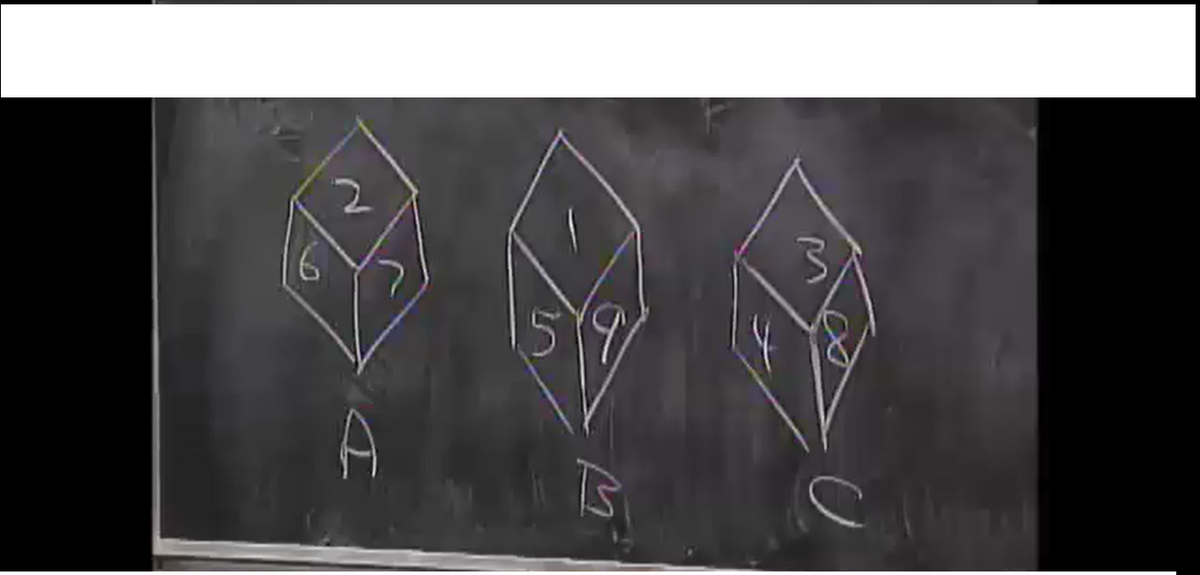A game of dice

You are given 3 dice as shown in the figure above where the numbers on the opposite faces of the each of the dice are equal.(For example,the number opposite to 6 in the first dice is also 6.)
Now the game begins like this I choose 1 dice and you choose another one from the remaining and after rolling whichever comes up with larger value wins the game.By choosing which dice are you more likely to win(that is with greater probability) in the following cases:
A.I choose dice A.
B.I choose dice B
C.I choose dice C
No vote yet
1 vote
Easy Math Editor
This discussion board is a place to discuss our Daily Challenges and the math and science related to those challenges. Explanations are more than just a solution — they should explain the steps and thinking strategies that you used to obtain the solution. Comments should further the discussion of math and science.
When posting on Brilliant:
*italics*or_italics_**bold**or__bold__paragraph 1
paragraph 2
[example link](https://brilliant.org)> This is a quote# I indented these lines # 4 spaces, and now they show # up as a code block. print "hello world"\(...\)or\[...\]to ensure proper formatting.2 \times 32^{34}a_{i-1}\frac{2}{3}\sqrt{2}\sum_{i=1}^3\sin \theta\boxed{123}Comments
A beats B, B beats C, and C beats A, all with 5/9 probability. Nontransistive dice, i.e, A > B > C > A
Log in to reply
Haha....indeed....but rolling twice the case becomes entirely opposite.....but does a pattern hold if we generalize it to k rolls?
I believe non-transitive dice were discovered, if not just made popular, by Dr. James Grime (seen on numberphile)?
Log in to reply
Yeah...I remember seeing that on numberphile too....
A. I will choose dice C B. I will choose dice A C. I will choose dice B
Though withoutvan answer its a beautiful question
Log in to reply
If you want the answer you may choose to read on non-transitive dice
A is actually no better than B, and B is no better than C. If u calculate the expected values, they are just the same. This means it will be a fair bet between any chosen pair of dice if u include the rewards for winning a bet as the difference in numbers rolled on the dice. When we choose A to bet with B, for instance, it is possible to get more rewards on B (example: u roll a 9) even when there is a lower probability (4/9) to win.
I choose c...c<a